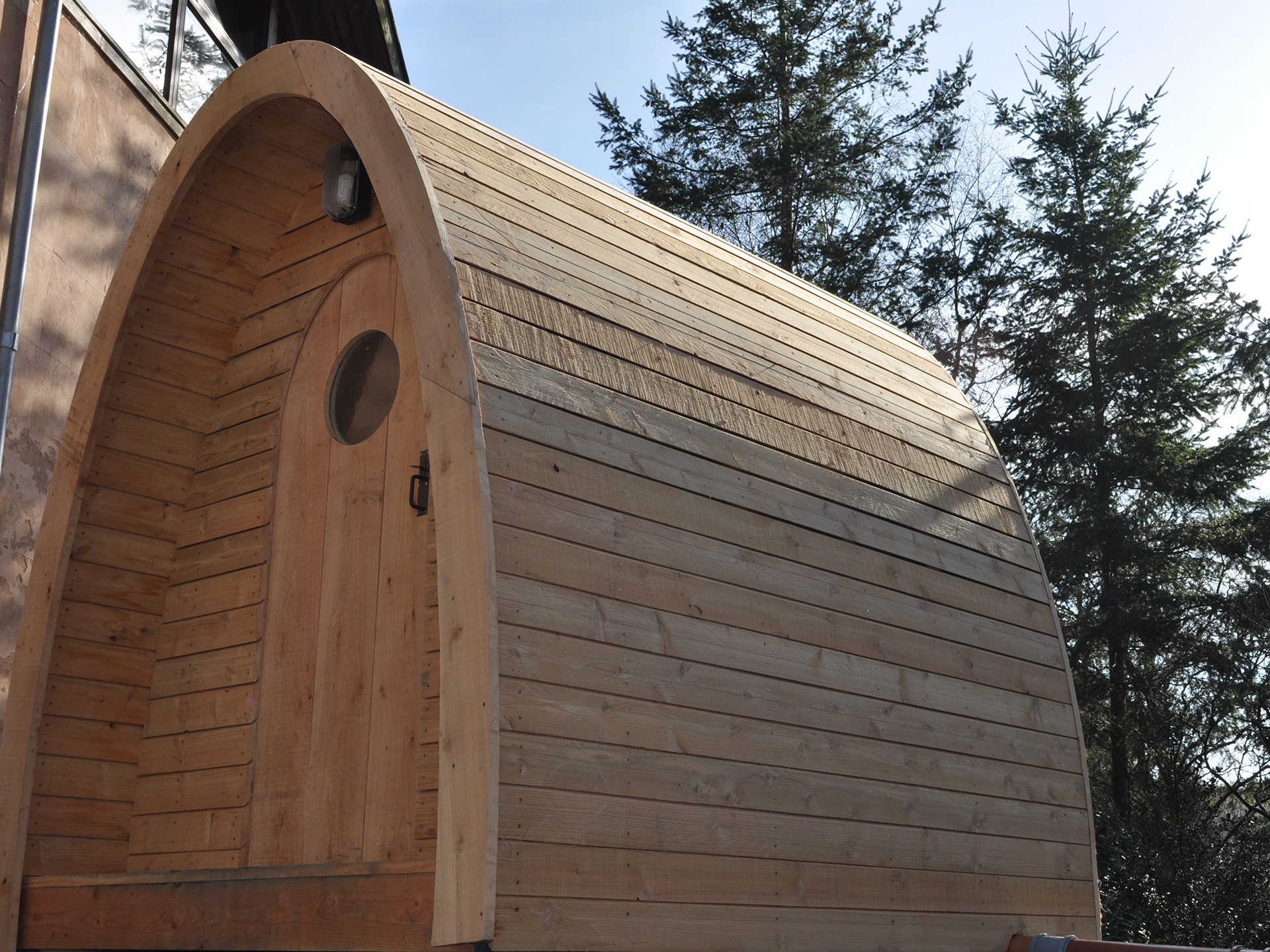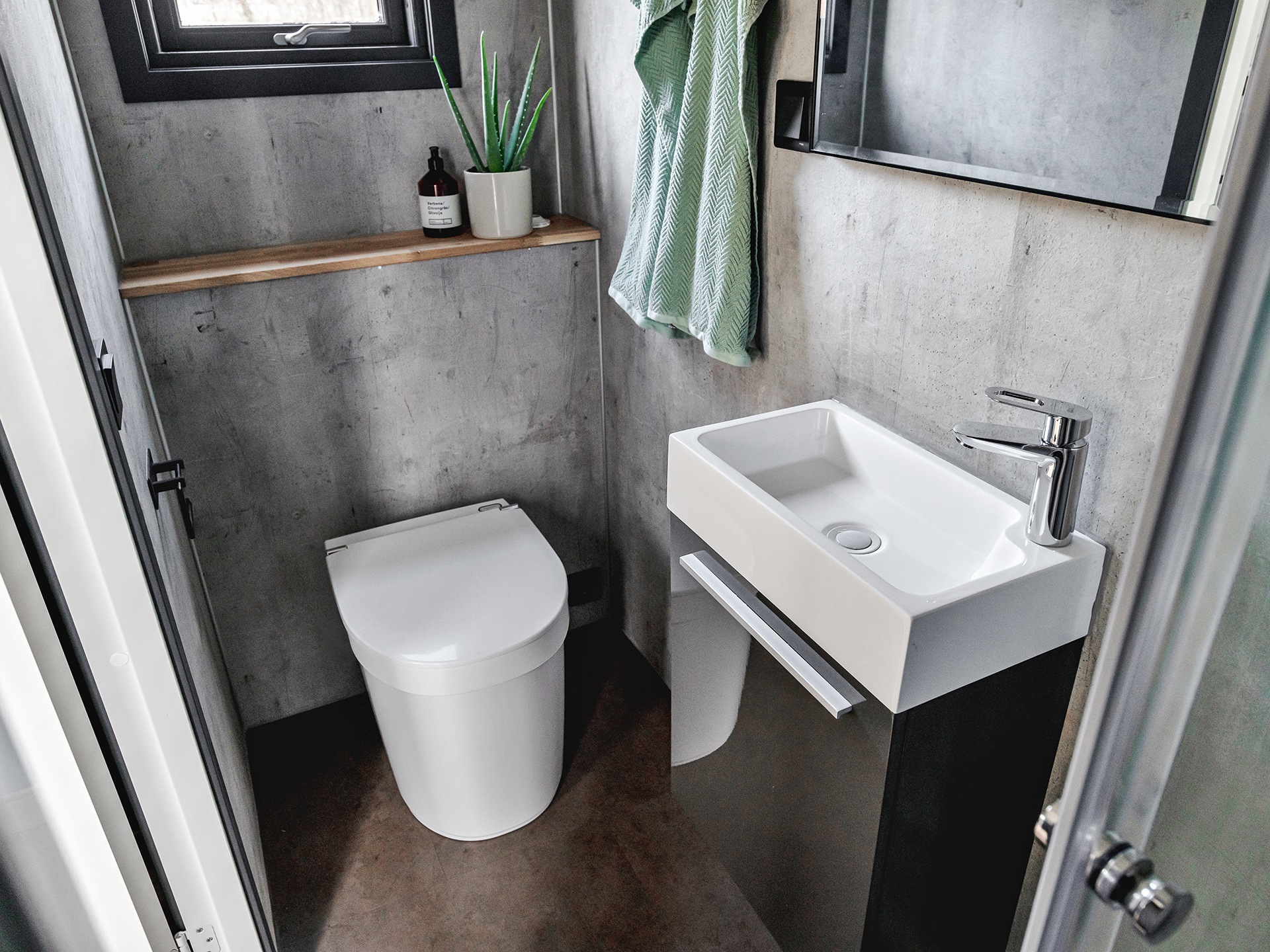What are composting toilets? Waterless toilets explained
We’ve got all the facts about composting and other waterless toilets
Don’t be put off by flashbacks to rank festival toilets: today’s composting toilets are a world away from stinky portable loos. The technology behind green loos has come on in leaps and bounds, making waterless toilets a great choice in many different situations.

Image credit: WooWoo Waterless Toilets
What is a composting toilet?
When we’re talking about non-plumbed and off-grid toilets, a better term to use is ‘waterless toilets’. There are several different types, including: composting toilets, in which the composting process (that breaks down the waste) happens within the toilet; compost toilets, where solid waste is emptied regularly into a special bin and composted separately, away from the toilet; and incinerating toilets, which use an electric- or gas-powered heater to burn all the waste, liquid and solid, reducing it to ash.

Image credit: WooWoo Waterless Toilets
Why choose a waterless toilet?
Waterless toilets are useful where there’s no mains water or sewerage connection, or where someone wants to make a more sustainable choice.
Jacob Andersen of WooWoo Waterless Toilets says, “Beyond sustainability, it’s also about empowering communities and individuals by providing access to hygienic, waterless toilet solutions in areas where traditional plumbing is not an option. A majority of our customers buy waterless toilets out of necessity (no access to plumbing), but we’re receiving more and more enquiries from people who just would prefer a waterless toilet, which is promising.”
Sustainability
Waterless toilets are considered a great environmental choice because they don’t use water, don’t require energy to clean up the sewage, use less emodied carbon and produce compost.

Image credit: Woowoo Waterless Toilets
Compost vs composting
Composting toilets are ones which have a large receptacle for all the waste, inside of which the breaking down of the waste (composting) happens. People use this kind of toilet just as they would any other. But, instead of flushing, they scatter in some wood shavings (or it could be sawdust, straw or torn up paper) to help aid the aerobic digestion process – and help stop that process being smelly. The kind sold as pet bedding works fine.

Image credit: Free Range Designs
Compost toilets can be smaller because the waste is removed regularly and put into another bin to compost separately. You can get regular-sized, modern ceramic or plastic compost toilets that fit onto the floor of a standard building because there is no need for a large storage chamber underneath. There are ones that will fit in boats, caravans and camper-vans, too. With these, the wood shavings are likely to be added to the large composting bin rather than as the toilet is used.

Image credit: Woowoo Waterless Toilets
Urine separating
Many modern compost and composting toilets separate solids from liquid. Urine is captured in a special funnel-like attachment in the front of the toilet, called a urine separator. Then it is either stored within the toilet and emptied regularly, or it is drained away into a soak-away in the ground. It can even be plumbed into the grey-water system, if there is a connection. If is collected within the toilet, it can later be diluted with water and used to water plants.
Separation helps stop the toilet from smelling. It also means that there is a lot less (solid) waste to remove. It does mean that everyone using the toilet will need to sit down to wee, though. Even men!
The composting process
As we said, the solid-waste containers from compost toilets must be emptied every so often into a composting bin. You can use biodegradable liners to make the process less unpleasant. To aid the breakdown of the waste, you mix in the wood shavings or something else rich in carbon. Large plastic compost bins work well to store the compost. It needs 12 to 24 months to rot down thoroughly, during which process it will reduce significantly in volume. So, you might need to have a series of bins: one that’s composting, one empty and ready to fill up, and one full of the finished compost. You just need to make sure whatever containers you use are rodent proof, childproof and not in a place that’s liable to flood.
Free Range Designs has designed a range of composting toilets in which the composting takes place in standard wheelie bins because they are portable, rodent-proof and cheap.

Image credit: Free Range Designs
Is the compost safe to use?
Generally, ‘humanure’, as the final compost is known, is safe to use as a fertiliser in your garden, with a few important caveats. You can find more information on the topic on Woowoo Waterless Toilets‘ website.
Are they smelly?
Anyone who has ever used festival toilets, must have a concern that composting toilets will be smelly. But it’s important to remember that festival toilets are being used beyond their maximum capacity by hundreds of drunk people. Many of them are portable toilets not composting toilets in any case. And modern waterless toilets are very carefully designed not to be smelly. There are vents and low-energy fans that draw smells – and moisture – out of the building.
Jacob Andersen explains, “There’s a stigma attached to waterless toilets, largely down to the negative experiences people have had with them at festivals. The sheer volume of use that you get at festivals often proves too much of a challenge for compost toilets as they are overused (and often misused), while the festival maintenance teams struggle to keep up with the excessive amount of work that’s required to keep the toilets clean and odour-free.
“The other problem with festival toilets is that the limited budget allocated towards them, and the need for large quantities, means that the systems they end up ordering are very basic, old-school sawdust systems. These have their place and can work well in some situations, but rarely under the conditions of a well attended festival.”

Image credit: Woowoo Waterless Toilets
Hand hygiene
The most obvious way to deal with hygiene in a toilet that’s not connected to a water supply is to provide sanitising hand gel.
Building regs
According to Building Regulations Part G 4.19, chemical or composting toilets may be used where:
- suitable arrangements can be made for the disposal of the waste either on or off the site; and
- the waste can be removed from the premises without carrying it through any living space or food preparation areas (including a kitchen); and
- no part of the installation would be installed in any places where it might be rendered ineffective by the entry of flood water.
Regs also say that composting toilets should not be connected to an energy source other than for ventilation or sustaining the composting process. If the structure a toilet is in doesn’t require building regs approval, then the toilet won’t either.
There are no British or European standards for composting toilets. But there is an American standard ANSI/NSF 41:2005.
When it comes to getting rid of urine from the toilet, you are usually allowed to discharge up to 10 litres a day into the ground. But you need to ensure your soak-away is at least 10m away from any water course and 50m away from any source of potable water, such as a well or borehole.
Incinerator toilets
An alternative to the composting toilet is the incinerator toilet – such as those in the Cinderella range – which burns the waste inside the toilet. Each time you use one of these loos you pop in a new paper liner before you start. When you’ve finished, you press the button and the bag and its contents, liquid and solid, drop down into the burn chamber. These videos show how the process works (using a banana for demonstration purposes).
The burn cycle takes about half an hour, but you can still use the toilet while it is running. All that’s left in the end are sterile ashes. There are different models powered by mains electricity and LPG, plus versions to install in boats or campers.
What about a hole in the ground?
Traditional long-drop toilets don’t work well because the waste can end up in a wet part of the ground, and this combined with not enough oxygen reaching the waste, results in anaerobic decomposition, which is both smelly and generates lots of greenhouse gases. And that’s without mentioning the issue of groundwater contamination. That’s why modern compost toilets do their (aerobic) composting above ground in special containers.
What’s available?

Image credit: Woowoo Waterless Toilets
There are lots of companies out there nowadays selling lots of different waterless toilets. Woowoo Waterless Toilets, for example, sells a full range of compost and composting toilets. It also has an interesting solution for public toilets, where there is no guarantee members of the public can be relied upon to follow the ‘sit down to wee’ rule required by toilets that rely on separating urine: the Kazuba toilet has a wide chimney that gets heated by the sun and uses the sun’s energy and breeze generated by the chimney to dry the waste out.
NatSol, meanwhile, offers fully accessible compost toilets, also a Zero Discharge waterless toilet where the waste goes straight into a septic tank below the toilet. Additionally, they sell urinals that are ‘flushed’ using the air from a small fan rather than by water.
Free Range Designs has a range of cute off-the-peg and custom-designed rustic wooden composting and compost toilets cubicles, which would be ideal for allotments, glamping sites, and the like. It has got everything from budget versions to oak-framed toilets, plus shower/ toilet combo units. Many are designed around their simple and practical wheelie-bin-based system. It also sells plans to help you build your own composting toilet.

Image credit: Free Range Designs
Find out more
If you want to find out more about compost toilets, the Centre for Alternative Technology in Machynlleth, Wales, runs great one-day courses and webinars teaching you everything you need to know about the subject.
Woowoo Waterless Toilets has lots of useful info on its site, where you can buy a full range of compost and composting toilets. They’ve even got a podcast about waterless toilets!









